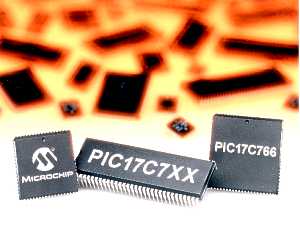Before we can talk about the internals of our hardware we have to get a few terms out of the way. You probably know most of this already, but it is important that we are completely clear about these terms:
bit: a bit can exist in one of two states, on or off. In this respect it can represent true or false in a program, although as we have seen in C, C regards a value of 0 as true and any other value as 1. In the case of a bit, it can only have two values or states. These states are sometimes referred to as HIGH and LOW, or SET and RESET, or SET and CLEAR. In electrical terms a bit can refer to the presence or absence of a particular voltage, perhaps (but not always) 5 volts. The word bit is short for binary digit.
byte: you make a byte by stringing a number of bits together. It is conventional that a byte is made up of 8 bits, but this is not mandatory. It is perfectly permissible to speak about "14 bit bytes" but you must make clear beforehand the size of you are using. The correct term for a collection of 8 bits which represent a quantity is an octet.
However, for the purposes of this course I will always use the term byte to mean an eight bit quantity.

A selection of different sized PICmicros